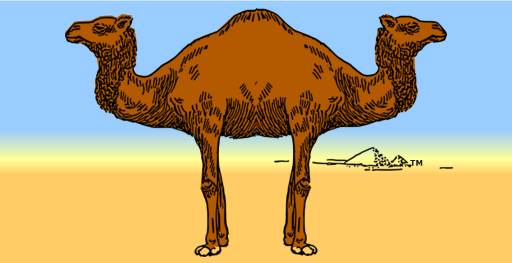While pursuing a palindrome using the word stomach, I happened upon the name Galilee, which reverses to eelilag. So I began playing around with Galilee and eel I lag.
Galilee eel I lag
drag Galilee eel I laggard
s yawl a Galilee eel I lag always
I liked something about the phrase “Galilee eel I lag always” and decided to explore that further.
Because a yawl is a a two-masted sailing boat, the word aboard came to mind. The verb am seemed a nice addition. I considered “I am aboard” for a bit, but decided to take the smaller step of using only “am aboard.” The trigger for adding am came when I entered aboard into the Word Explorer field. The split dra-oba listed only six words starting with oba and I chose Obama.
Am aboard s yawl a Galilee eel I lag always dra Obama
This change introduced a new problem. Now, in addition to the middle of the palindrome and each end as places to expand, I have added two more. I wanted to fix these two new nodes before resuming the usual searches. On the left I have an S between aboard and yawl. The expansion node is between aboard and S. The matching node on the right is between always and dra.
On the left side, I needed a word ending with S. A common solution is to use a possessive form, which makes sense with what’s there. For example, “Am aboard Tom’s yawl.” To meet the symmetry requirement, I must reverse what I add on the left, and put it before dra on the right.
In the first item in the list below, I put a * where I need to add letters and words. I’m searching the Reversed list for words that end with dra, meaning I look at reversed words that begin with ard.
Am aboard *s yawl a Galilee eel I lag always *dra Obama
am aboard nuts yawl a Galilee eel I lag always tundra Obama
am aboard Nek’s yawl a Galilee eel I lag always Kendra Obama
am aboard Nassac’s yawl a Galilee eel I lag always Cassandra Obama
While I liked the last construction best, the two words “Galilee eel” expose the symmetry in too obvious a fashion for my taste. So I went looking for a way to fix that. For some time I played around with Galilean, which meant replacing eel with ael. I first intended to make the N at the end of Galilean be the center of the palindrome. However, it quickly became hard to find any words ending with ael that could fit in that spot.
Maybe I could just put a single letter in front of eel. I came up with these: feel, heel, keel, reel, weel. A weel is a wicker fishing trap, specifically for eels. Ooh, eels! However, that thought is another kind of trap because when I add the W, the word eel is no longer in the palindrome. I encounter that situation often. I’ll be hanging onto a previous word, mistakenly thinking it is an important subject of the sentence, when I am actually exploring new words that replace an old one. It’s better to remain in the present and work with what is actually there after making an exploratory change.
Skipping weel, I settled instead on heel, referring to the owner of the yawl.
Am aboard Nassac’s yawl, a Galilee heel I lag always, Cassandra Obama.
The grammar is a bit tortured. A technically correct interpretation would mean that the sailboat is a Galilee heel. However, palindromes often stretch and twist accepted grammatical norms. I think it’s quite easy to get the gist and conclude that Nassac is the Galilee heel.
If I put a period after yawl, and a comma after heel, then the interpretation shifts, and the speaker is self-deprecating, perhaps angling for sympathy from Cassandra.
Am aboard Nassac’s yawl. A Galilee heel, I lag always, Cassandra Obama.
About Author
I’ve had a lifelong interest in English and writing, which I maintained throughout my engineering career. My computer language skills and open-source word lists made the Palindromedary possible, along with a sense of how to apply technology to the task of composing a palindrome. Drawing on my web development experience since 2002, a website seemed the natural choice for first publication.

